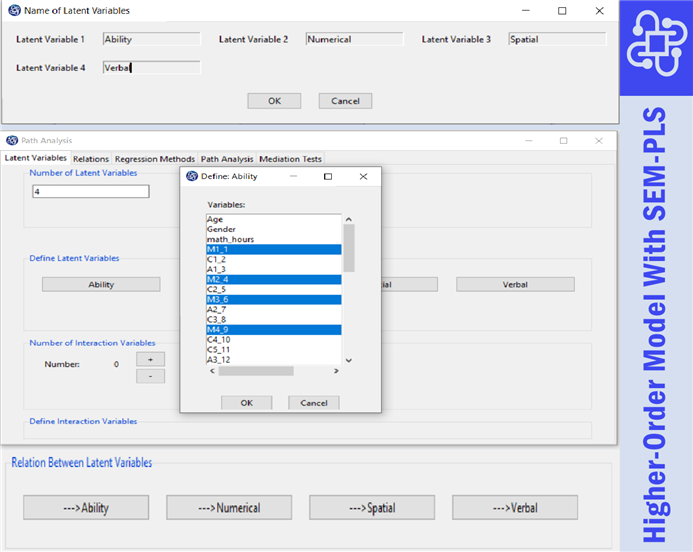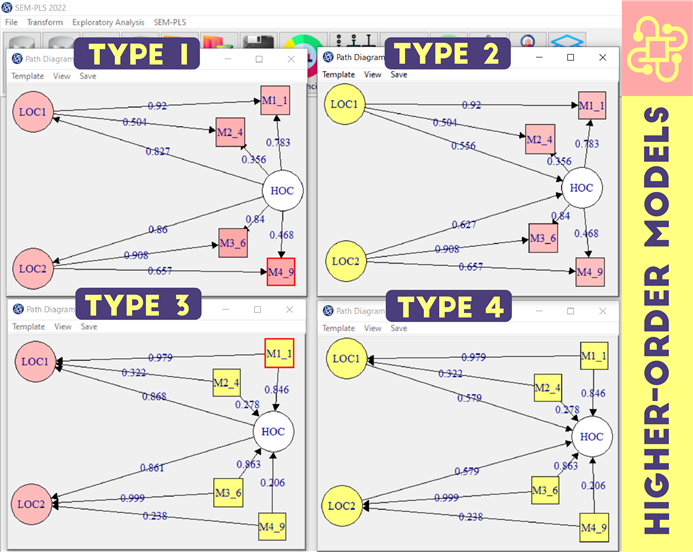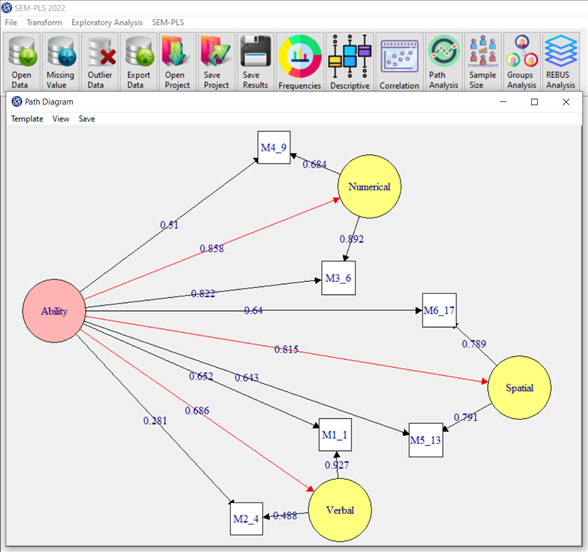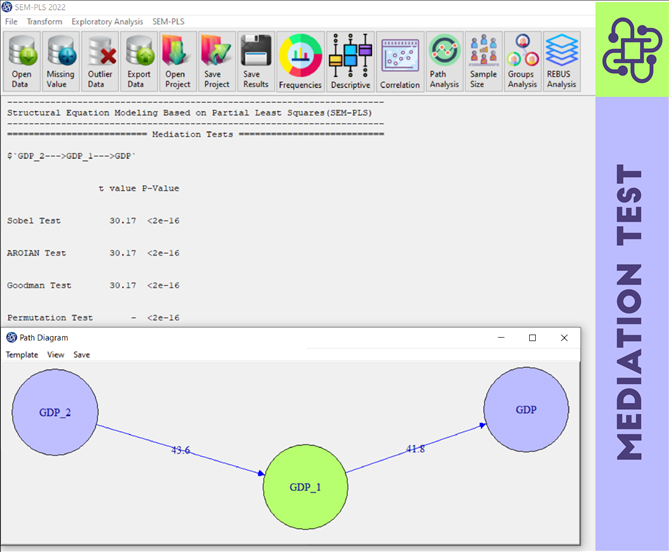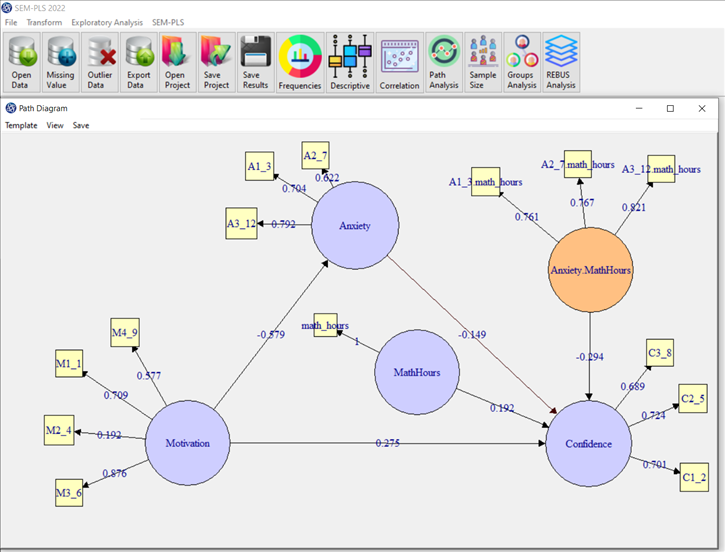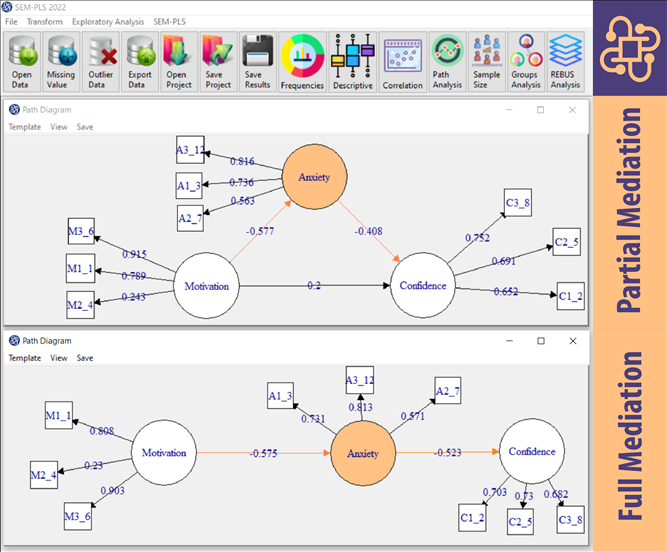Often, estimating one single SEM model is not enough. We are talking about dealing with information from various groups in data. For instance, when we work with survey data, it is almost inevitable to have demographic data like the gender or age of the respondents. When you have groups for females and males, you ask yourself about possible differences between the two genders.
This is an issue that has to do with the comparison of path models, which leads us to the fundamental question of:
Given several structural models, how can they be compared?
Why is this question so important? Because given the complexity of path models in general, the truth is that there is no simple answer for it. Path models may be different at so many levels that there are many ways in which they can be compared.
We propose the Groups Analysis method (Introduction to SEM-PLS: E.4.2.2. Group Analysis) to answer this question.
The SEM-PLS software allows you to do Groups Analysis in different ways. With this software, in addition to comparing the path coefficients in different groups, you can perform model indices such as R-Squared, GOF, and etc (See Groups Analysis).




